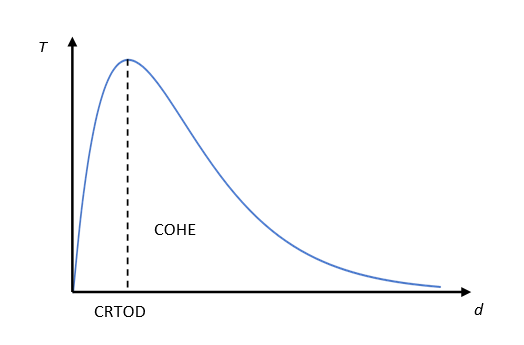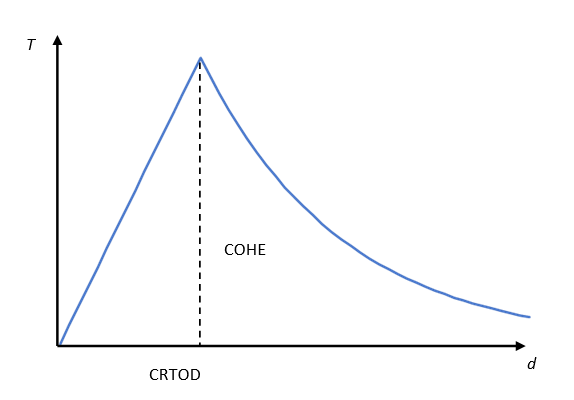MCOHE
Bulk Data Entry Defines the material properties for cohesive materials.
Format
| (1) | (2) | (3) | (4) | (5) | (6) | (7) | (8) | (9) | (10) |
|---|---|---|---|---|---|---|---|---|---|
| MCOHE | MID | MODEL | |||||||
| COHE | CRTOD | MAXOD | BETA | EXP | VED | SFC |
Example
| (1) | (2) | (3) | (4) | (5) | (6) | (7) | (8) | (9) | (10) |
|---|---|---|---|---|---|---|---|---|---|
| MCOHE | 2 | 2 | |||||||
| 10.0 | 0.03 | 0.5 | 1.0e-3 | -1.0 |
Definitions
| Field | Contents | SI Unit Example |
|---|---|---|
| MID | Material identification number. No default (Integer > 0) |
|
| MODEL | Indicates the traction-separation
relationship profile type. 5
No default (Integer) |
|
| COHE | The energy per area that can be
absorbed by the cohesive elements. It is the area under the traction-separation
curve. No default (Real > 0.0) |
|
| CRTOD | Critical opening distance. No default (Real ≥ 0.0) |
|
| MAXOD | Maximum opening displacement (bilinear
model only). No default (Real > 0.0) |
|
| BETA | Coefficient on the shear opening for
mode mix based on displacement. Default = 1.0 (Real ≥ 0.0) |
|
| EXP | Exponential decay factor
(linear-exponential model only). No default (Real > 0.0) |
|
| VED | Viscous energy dissipation
factor. Default = 0.0. (Real > 0.0) |
|
| SFC | Stiffening factor in compression.
Default = -1.0 |
Comments
- The material identification number must be unique for all MAT1, MAT2, MAT3, MAT8, MAT9, MGASK, MCOHE, and MCOHED entries.
- The normal direction of cohesive material is the principal direction (local 3-direction) in cohesive solids. Cohesive closure is defined as the relative change in position of the top and bottom surfaces of the cohesive element along the cohesive thickness direction.
- MCOHE mainly defines nonlinear properties for cohesive materials under separation. MCOHE has anisotropy only in normal direction, which is called normal anisotropy. For linear analysis, the normal direction modulus is defined by the slope of traction-separation curve.
- In some cases, snap-back phenomena could appear in numerical models with cohesive elements. VED can be used to stabilize the solution.
- The three types of traction-separation curve
are:

Figure 1. Bilinear
Figure 2. Exponential
Figure 3. Linear-Exponential - Normal and shear modes are mixed based on
displacement. The mixing formulation is:
(1) Where,- , , and
- Relative displacements of the top and the bottom faces of a cohesive element along elemental x-, y- and z-axes.
- Mixing coefficient, which can be input on the BETA field.